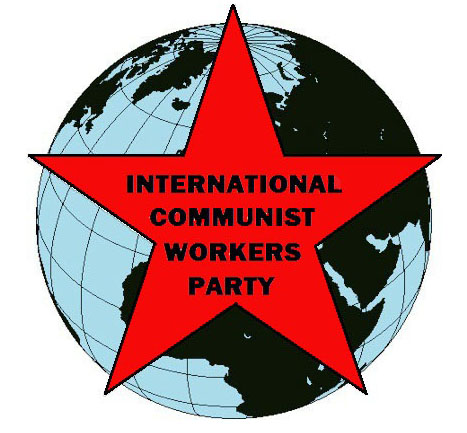
 |
FIGHT FOR COMMUNISM! |
International Communist Workers Party | |
It was the workers who were masters of the factory. That, according to the retired steel workers, was the stand-out feature of factory life in the early years of the communist led revolution in China. They were talking about life at the Tonghua Steel Company in the 1960s and 1970s.
They weren’t glorifying the past with misty- eyed recollections of their youth. They were, however, recalling factory life in a country where communists were struggling to complete a revolution and build a future free from exploitation. In the end we know the communists lost but it would be a mistake to dismiss their struggle without making note of their achievements.
And the basis of these achievements - and they are political achievements, not just productive ones - had been developed in another plant by the Anshan Steel Workers. Produced in 1960, this set of principles became known as the Angun Constitution. They were developed in opposition to the production practices introduced by the then Soviet Union. They rejected the Soviet notion that managers had to control production and that management needed material incentives (like a hierarchy of pay scales) to spur development.
The Constitution had four main features. Factories were not allowed to fire workers. Workers’ income was stable and set by national standards. Management was participatory: workers participated in plant decisions; managers participated in productive labor (see below). Finally, workers had a complete right to criticize all management openly.
Of course conditions of life outside the factory played a big part in shaping the Constitution. While wages were more or less stagnant, housing, education and medical services were more or less free. There was an emerging sense of collective achievement. Wages played a less dominant role in your life.
It was this lived experience of collectivity (the power and capability of the masses) that spearheaded the attack on material incentives. Steel production was equated to the long term interests of the working class as a whole. The day-to-day routine of the mill worker produced more than steel, it produced a social purpose and consciousness. It expressed the power of the masses.
In this light, material incentives were seen as short-sighted individualism. They undercut this vital sense of collectivity and promoted Party cadre rather than workers. If a communist society was to be built, the needs of the masses and not individuals had to be dominant. “If the interest of all people are realized,” the argument went, “then the interests of the individual can also be realized.”
In capitalist society wage workers are marginalized. Wages, benefits, even jobs can be cut without a second thought. In China of the 1960s-70s, where significant forces were struggling for communism, workers were championed, wages marginalized. We know now, from hindsight, that the communist forces made a mistake here: wages shouldn’t have been marginalized. They should have been abolished. And the fight to abolish wages couldn’t only be waged and won in one factory, but would have to be a fight for communist political power to abolish wages everywhere.

Yet, although the ideas of these retired steel workers might have been defeated, they were certainly not crushed. We have come to know about this group of some thirty workers because of their central role in organizing thousands of workers at Tonghua Steel Company to resist a new round of privatization in 2009 at the state-owned plant. It was a successful struggle but not before thousands of angry workers beat to death the chief manager, who represented the private shareholder!
However, an even more significant victory can emerge from their struggle. Today, thanks to Red Flag, workers on the shop floors of factories in three different continents can use the workers’ recollections of the struggle to build a communist society in China in the 1960-70s to map out how the communist future we are planning to build will look by realizing how mass political consciousness can change.
This article raises questions about how production will be organized in communist society. We hope readers will comment on this so that we can all have a clear vision of how new production centers will be organized without managers, or wages or money. Will we have constitutions? How will our mass party mobilize workers to organize production?
*****
Workers Lead: Leaders Work
I remember living in Vancouver, Canada, in the 1970s when the first merchant ship from post-revolutionary China was about to dock. Since at the time it signified a new trade policy (Canada trading with China), it became a civic affair and the ship had invited all the city’s officials to a banquet on board to celebrate the occasion.
In the daytime before the banquet, trade union activists and others were invited to tour the ship. I didn’t go but a friend did. What was the highlight for him? “We stopped by the cafeteria,” he told me, “where they were preparing for the banquet. ‘See the guy laying the table over there?’ the guide asked us. ‘Well he’s the ship’s captain. When the ship is in port we don’t need a captain so he got assigned as kitchen helper!’”